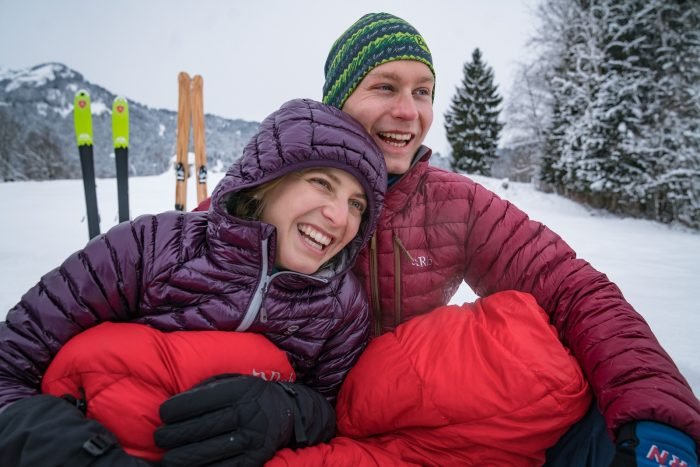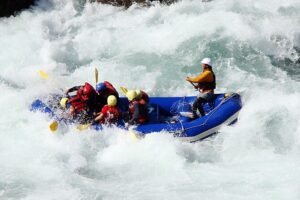Comparing Down vs. Synthetic Insulated Jackets: A Comprehensive Guide
When it comes to choosing an insulated jacket for outdoor activities, the debate between down and synthetic insulation is a common one. Each type of insulation has its own set of advantages and disadvantages, and understanding these can help you make an informed decision based on your specific needs, preferences, and the conditions you’ll be facing. In this comprehensive guide, we will explore the differences between down and synthetic insulated jackets, examining their performance, warmth, weight, packability, durability, water resistance, breathability, cost, ethical and environmental considerations, and more.
Understanding Down and Synthetic Insulation
Down Insulation
Down insulation is derived from the soft feathers found underneath the outer feathers of ducks and geese. It is known for its exceptional warmthtoweight ratio and compressibility, making it a popular choice for outdoor enthusiasts.
Key Characteristics of Down Insulation:
Warmth: Down clusters trap air effectively, providing superior insulation.
Weight: Down is lightweight, making it ideal for activities where weight is a concern.
Compressibility: Down can be compressed into a small size, making it easy to pack.
Durability: With proper care, down can maintain its loft and warmth for many years.
Breathability: Down is breathable, allowing moisture to escape and keeping you comfortable.
Synthetic Insulation
Synthetic insulation is made from manmade fibers designed to mimic the insulating properties of down. It is often used in jackets for its affordability and performance in wet conditions.
Key Characteristics of Synthetic Insulation:
Warmth: Synthetic insulation provides good warmth, though generally not as high as down.
Weight: Synthetic insulation is heavier than down.
Compressibility: Synthetic insulation is less compressible than down but still packable.
Durability: Synthetic fibers are resilient and can withstand rough use.
Water Resistance: Synthetic insulation retains warmth when wet and dries quickly.
Affordability: Generally, synthetic insulated jackets are more affordable than down jackets.
Warmth
Down Insulation Warmth
Down is renowned for its ability to provide superior warmth. The insulating power of down is measured in fill power, which ranges from around 300 to over 900. Higher fill power indicates better insulation efficiency and higher quality down. For example, 900fill down provides more warmth per ounce than 600fill down.
Pros:
Exceptional warmthtoweight ratio.
High fill power down provides significant warmth.
Cons:
Loses insulating properties when wet.
Synthetic Insulation Warmth
Synthetic insulation, while not as efficient as highquality down, still provides substantial warmth. Modern synthetic insulations, like PrimaLoft and Thinsulate, are designed to offer improved warmth and performance.
Pros:
Provides reliable warmth, even when wet.
Suitable for damp and wet conditions.
Cons:
Heavier and bulkier than down for the same level of warmth.
Weight and Packability
Down Insulation
One of the biggest advantages of down insulation is its lightweight nature and compressibility. Down jackets can be packed down to a very small size, making them ideal for backpacking, climbing, and other activities where space and weight are critical considerations.
Pros:
Extremely lightweight.
Highly compressible and packable.
Cons:
Requires careful handling to avoid moisture exposure.
Synthetic Insulation
Synthetic insulated jackets are generally heavier and less compressible than down jackets. However, advancements in technology have led to lighter and more packable synthetic options.
Pros:
Can be reasonably lightweight and packable.
Performance is not significantly affected by moisture.
Cons:
Typically bulkier than down for the same warmth.
Durability and Longevity
Down Insulation
Down jackets are highly durable when properly cared for. The longevity of down insulation depends on maintaining its loft and avoiding moisture. With appropriate maintenance, a highquality down jacket can last for many years.
Pros:
Longlasting with proper care.
Maintains loft and warmth over time.
Cons:
Requires more careful maintenance and storage.
Can be damaged by moisture and compression.
Synthetic Insulation
Synthetic jackets are generally more resilient to rough use and less susceptible to damage from moisture. They require less maintenance than down and are a good option for activities where the jacket might be exposed to abrasion and wet conditions.
Pros:
More resilient to rough use and moisture.
Easier to maintain.
Cons:
May lose insulating efficiency over time with repeated compressions.
Generally less durable in terms of longterm loft retention.
Water Resistance and Performance in Wet Conditions
Down Insulation
Traditional down insulation loses its insulating properties when it gets wet because the down clusters clump together and lose their loft. However, hydrophobic treatments on down (often referred to as “waterresistant down”) have improved its performance in damp conditions.
Pros:
Hydrophobic down offers better water resistance than untreated down.
Superior warmth in dry conditions.
Cons:
Loses insulation efficiency when wet.
Slower to dry.
Synthetic Insulation
Synthetic insulation is inherently waterresistant and retains much of its insulating properties even when wet. This makes synthetic jackets a better choice for activities in wet and humid conditions.
Pros:
Retains warmth when wet.
Dries quickly.
Cons:
Typically heavier and bulkier than down for the same level of warmth.
Breathability
Down Insulation
Down is naturally breathable, allowing moisture to escape from the body and helping to regulate temperature. This makes down jackets comfortable for highintensity activities where breathability is important.
Pros:
Naturally breathable.
Comfortable for a range of activities.
Cons:
Breathability can be compromised by moisture.
Synthetic Insulation
Synthetic insulation is generally less breathable than down, although advancements in fabric technology have improved the breathability of synthetic jackets. Ventilation features like pit zips can help enhance breathability.
Pros:
Improved breathability in newer synthetic materials.
Often includes ventilation features.
Cons:
Less breathable than down overall.
Cost and Value
Down Insulation
Highquality down jackets, especially those with high fill power, tend to be more expensive. However, their durability and superior warmth can make them a valuable longterm investment for those who need toptier performance.
Pros:
Highquality down provides excellent value in terms of warmth and longevity.
Can be a good longterm investment.
Cons:
Higher initial cost.
Requires more maintenance.
Synthetic Insulation
Synthetic insulated jackets are generally more affordable than down jackets. They offer good value for money, especially for those who need reliable performance in wet conditions and less frequent use.
Pros:
More affordable.
Good value for versatile and rough use.
Cons:
May need to be replaced more frequently due to reduced longevity.
Ethical and Environmental Considerations
Down Insulation
The ethical sourcing of down has become an important consideration for many consumers. Look for certifications such as the Responsible Down Standard (RDS) which ensures that the down is sourced from birds that have not been subjected to unnecessary harm.
Pros:
RDScertified down ensures ethical sourcing.
Biodegradable and natural material.
Cons:
Animal welfare concerns if not sourced ethically.
Environmental impact of down farming.
Synthetic Insulation
Synthetic insulation, while not derived from animals, is made from petroleumbased products which can have environmental impacts. However, some brands are now using recycled materials to create synthetic insulation, reducing the environmental footprint.
Pros:
No animal welfare concerns.
Increasing use of recycled materials.
Cons:
Petroleumbased, contributing to environmental impact.
Nonbiodegradable.
Use Cases and Recommendations
Down Insulated Jackets
Best For:
Cold, dry conditions.
Activities where weight and packability are crucial, such as backpacking, climbing, and mountaineering.
Those willing to invest in a highquality, longlasting jacket.
Examples:
Patagonia Down Sweater: Known for its highquality down, lightweight, and compressibility.
Arc’teryx Cerium LT Hoody: Offers excellent warmthtoweight ratio and a sleek design.
Synthetic Insulated Jackets
Best For:
Wet and humid conditions.
Activities where the jacket might get wet or rough use, such as skiing, snowboarding, and general outdoor work.
Budgetconscious consumers or those looking for a versatile, easycare option.
Examples:
The North Face ThermoBall Eco: Utilizes recycled materials and provides reliable warmth in damp conditions.
Patagonia Nano Puff: Lightweight, packable, and uses PrimaLoft insulation for excellent performance.
Detailed Reviews of Top Insulated Jackets
Patagonia Down Sweater
The Patagonia Down Sweater is a wellloved classic in the world of down jackets. Its design, materials, and performance make it a top contender for anyone considering a downinsulated jacket.
Key Features:
Fill Power: 800fill power Advanced Global Traceable Down.
Material: 100% recycled polyester ripstop shell.
Weight: Approximately 13.1 ounces (371 grams).
Fit: Regular fit, suitable for layering.
Pockets: Two zippered handwarmer pockets and an internal zippered chest pocket that doubles as a stuff sack.
Pros:
Excellent warmthtoweight ratio.
Highly compressible and packable.
Durable and waterresistant shell material.
Ethical sourcing of down.
Cons:
Higher price point.
Less effective in wet conditions without additional protection.
Performance:
The Patagonia Down Sweater excels in cold, dry conditions, providing exceptional warmth without adding much weight to your pack. Its compressibility makes it an excellent choice for backpacking and mountaineering. However, in wet conditions, it requires an outer shell to maintain its insulating properties.
Arc’teryx Cerium LT Hoody
The Arc’teryx Cerium LT Hoody is a premium down jacket designed for maximum warmth and minimal weight, ideal for highperformance activities.
Key Features:
Fill Power: 850fill European grey goose down.
Material: Lightweight, durable Arato 10 nylon shell.
Weight: Approximately 10.8 ounces (305 grams).
Fit: Trim fit for improved thermal efficiency.
Pockets: Two zippered hand pockets and an internal zippered security pocket.
Pros:
Exceptional warmthtoweight ratio.
Very lightweight and packable.
Articulated design for freedom of movement.
Highquality materials and construction.
Cons:
High cost.
Down insulation requires careful handling to avoid moisture.
Performance:
The Arc’teryx Cerium LT Hoody is a top performer in cold, dry environments, offering unparalleled warmth for its weight. Its design includes strategic placement of synthetic insulation in moistureprone areas, enhancing its overall performance. This jacket is ideal for alpine climbing, mountaineering, and other highoutput activities where weight and warmth are critical.
The North Face ThermoBall Eco
The North Face ThermoBall Eco is a versatile synthetic insulated jacket designed to provide reliable warmth in a variety of conditions.
Key Features:
Insulation: ThermoBall Eco synthetic insulation made from recycled polyester.
Material: 100% recycled nylon shell.
Weight: Approximately 15.9 ounces (450 grams).
Fit: Standard fit for versatile layering options.
Pockets: Two zippered hand pockets and an internal zippered chest pocket.
Pros:
Retains warmth when wet.
Environmentally friendly materials.
Affordable compared to highend down jackets.
Easy to care for and maintain.
Cons:
Heavier and less compressible than down.
Provides less warmth for the same weight as highquality down.
Performance:
The North Face ThermoBall Eco is a reliable choice for wet and variable conditions, offering consistent warmth and easy care. It’s a great option for hiking, skiing, and everyday wear, especially in climates where moisture is a concern. Its use of recycled materials also makes it an environmentally conscious choice.
Patagonia Nano Puff
The Patagonia Nano Puff is a popular synthetic insulated jacket known for its lightweight design and versatile performance.
Key Features:
Insulation: PrimaLoft Gold Insulation Eco, 55% postconsumer recycled content.
Material: 100% recycled polyester shell and lining.
Weight: Approximately 11.9 ounces (337 grams).
Fit: Regular fit, suitable for layering.
Pockets: Two zippered hand pockets and an internal zippered chest pocket that doubles as a stuff sack.
Pros:
Lightweight and highly packable.
Good warmthtoweight ratio for synthetic insulation.
Waterresistant and windproof shell material.
Environmentally friendly with recycled materials.
Cons:
Less warm than highfill power down jackets.
Can feel less breathable in highoutput activities.
Performance:
The Patagonia Nano Puff excels in wet and windy conditions, providing reliable warmth and protection. Its lightweight and packable design make it a great option for backpacking, climbing, and travel. The use of PrimaLoft Gold Insulation Eco ensures good performance even when wet, and the jacket’s environmental credentials are a bonus for ecoconscious consumers.
Maintenance and Care Tips
Proper maintenance and care of your insulated jacket, whether down or synthetic, can significantly extend its lifespan and maintain its performance.
Down Jackets
- Storage: Store your down jacket in a loose, breathable bag rather than compressing it in a stuff sack. This helps maintain its loft.
- Cleaning: Wash your down jacket with a downspecific detergent to preserve the oils in the feathers. Use a frontloading washing machine on a gentle cycle and tumble dry on low with clean tennis balls to help restore loft.
- Repairs: Address small tears or holes promptly with a patch or fabric glue to prevent down from escaping.
Synthetic Jackets
- Storage: Store your synthetic jacket in a cool, dry place. It can be compressed for short periods but should be stored loosely when not in use.
- Cleaning: Wash with mild detergent on a gentle cycle. Most synthetic jackets can be airdried or tumbledried on low heat.
- Repairs: Synthetic jackets are generally more resistant to wear and tear, but repair any damage to the outer shell promptly to maintain insulation performance.
The choice between down and synthetic insulated jackets depends on a variety of factors including the conditions you’ll face, the type of activities you’ll be engaging in, your budget, and personal preferences. Down insulated jackets offer superior warmthtoweight ratio, excellent compressibility, and longterm durability, making them ideal for cold, dry conditions and activities where weight is a critical consideration. Synthetic insulated jackets, on the other hand, provide reliable warmth in wet conditions, require less maintenance, and are generally more affordable, making them suitable for a wider range of activities and rough use.
By understanding the strengths and weaknesses of each type of insulation, you can make an informed decision that best suits your needs. Whether you opt for the luxurious warmth of down or the reliable performance of synthetic insulation, having the right jacket can make all the difference in your outdoor adventures.
Investing in a highquality insulated jacket, tailored to your specific needs and the conditions you’ll encounter, will enhance your comfort and performance in the great outdoors. Whether you’re scaling alpine peaks, hiking through wet forests, or navigating urban environments in winter, the right insulated jacket is an indispensable part of your gear.
Ultimately, the decision comes down to evaluating your specific needs and preferences. Consider where you’ll be using the jacket most frequently, what kind of weather conditions you’ll face, and how much you’re willing to invest. Both down and synthetic jackets have their merits, and the right choice will keep you warm and comfortable no matter where your adventures take you.





